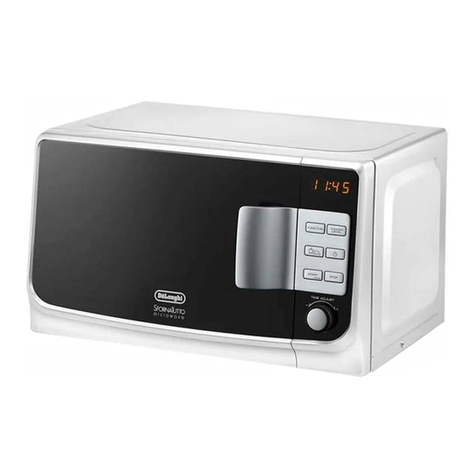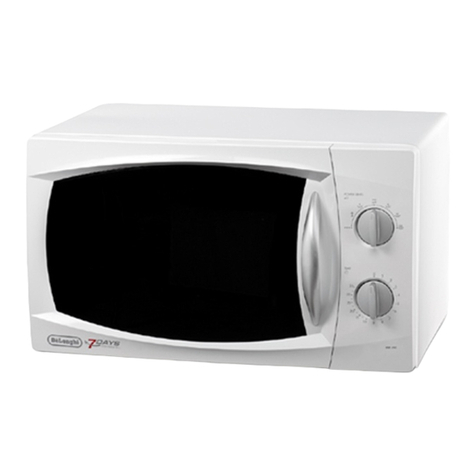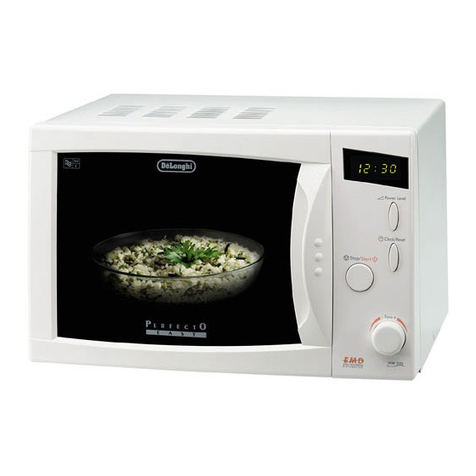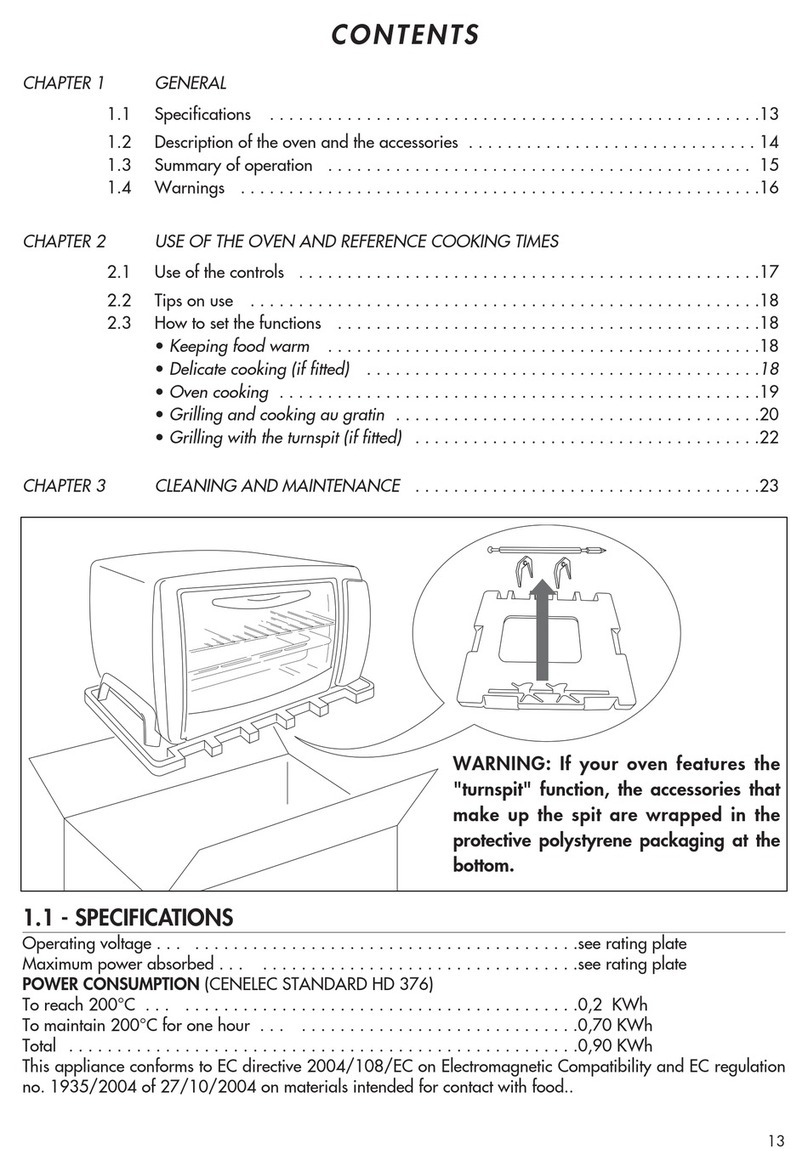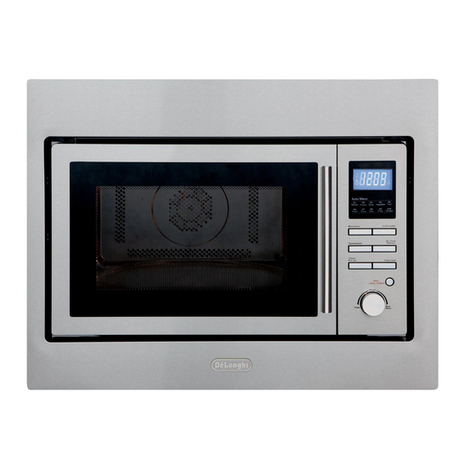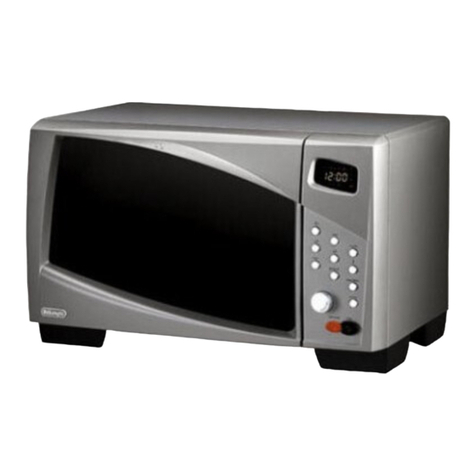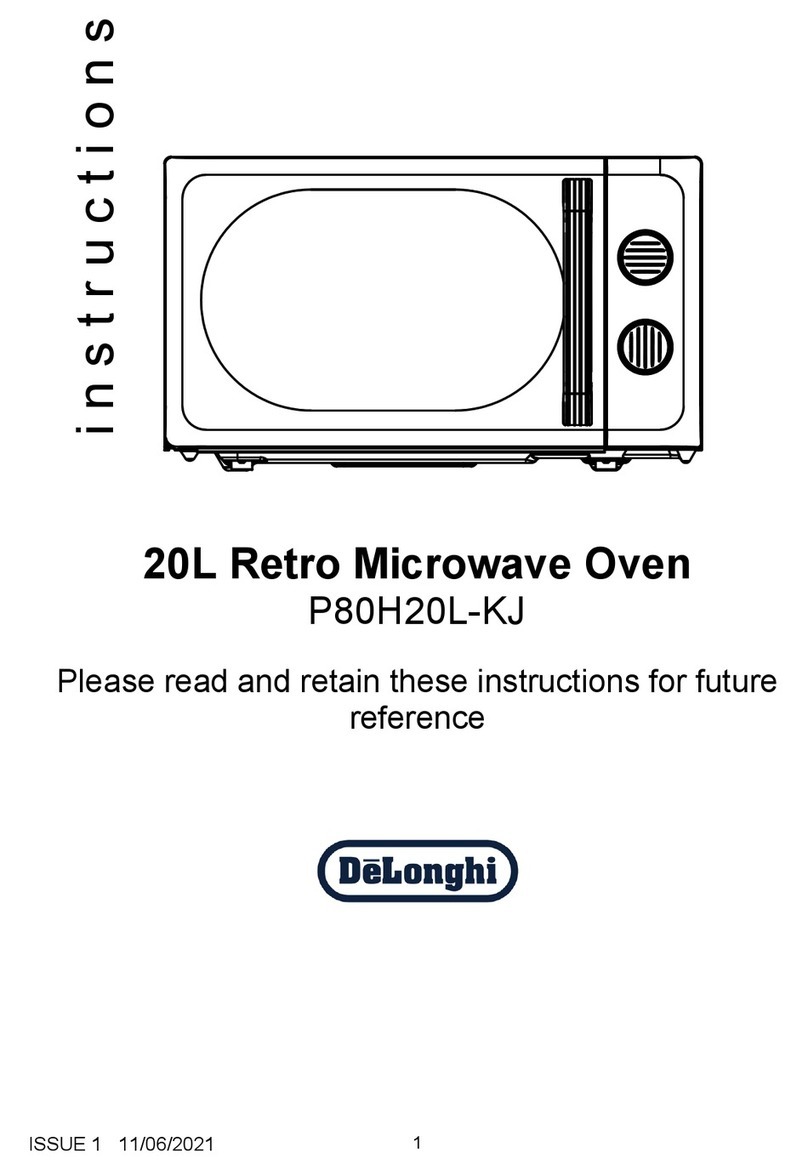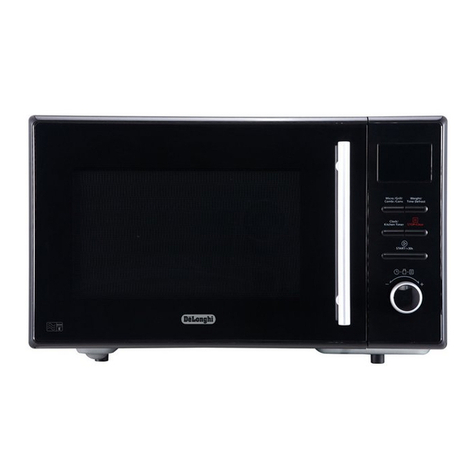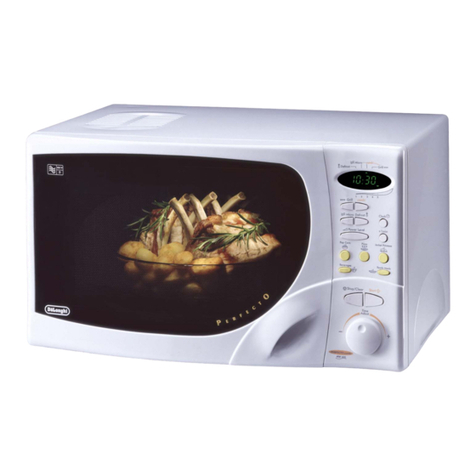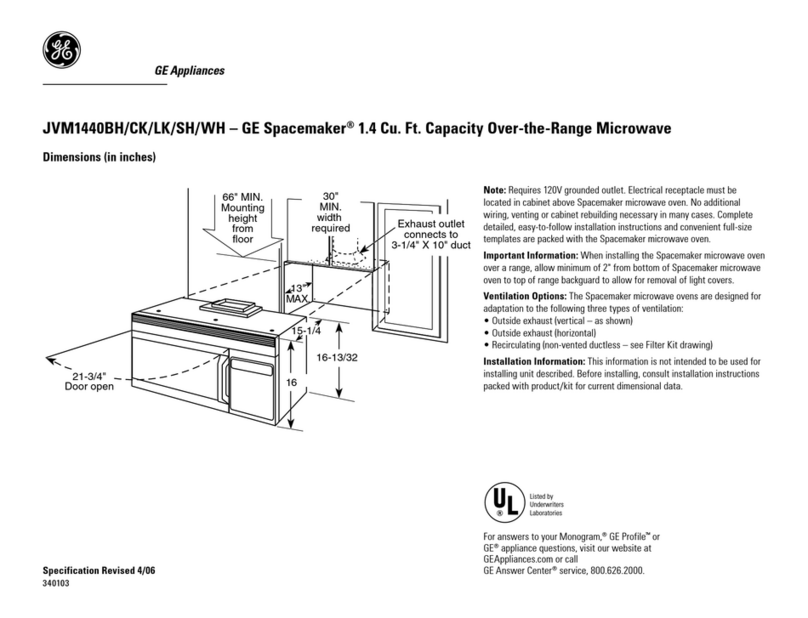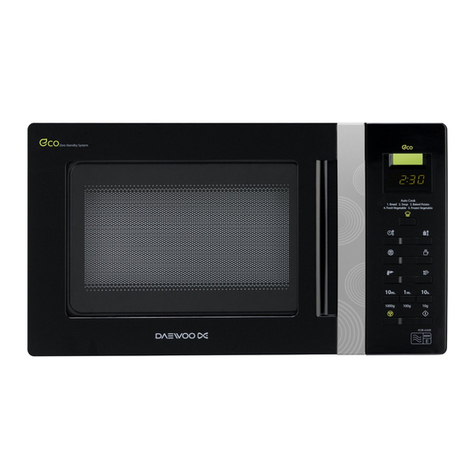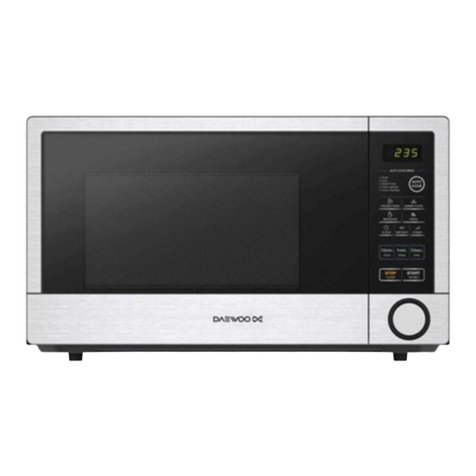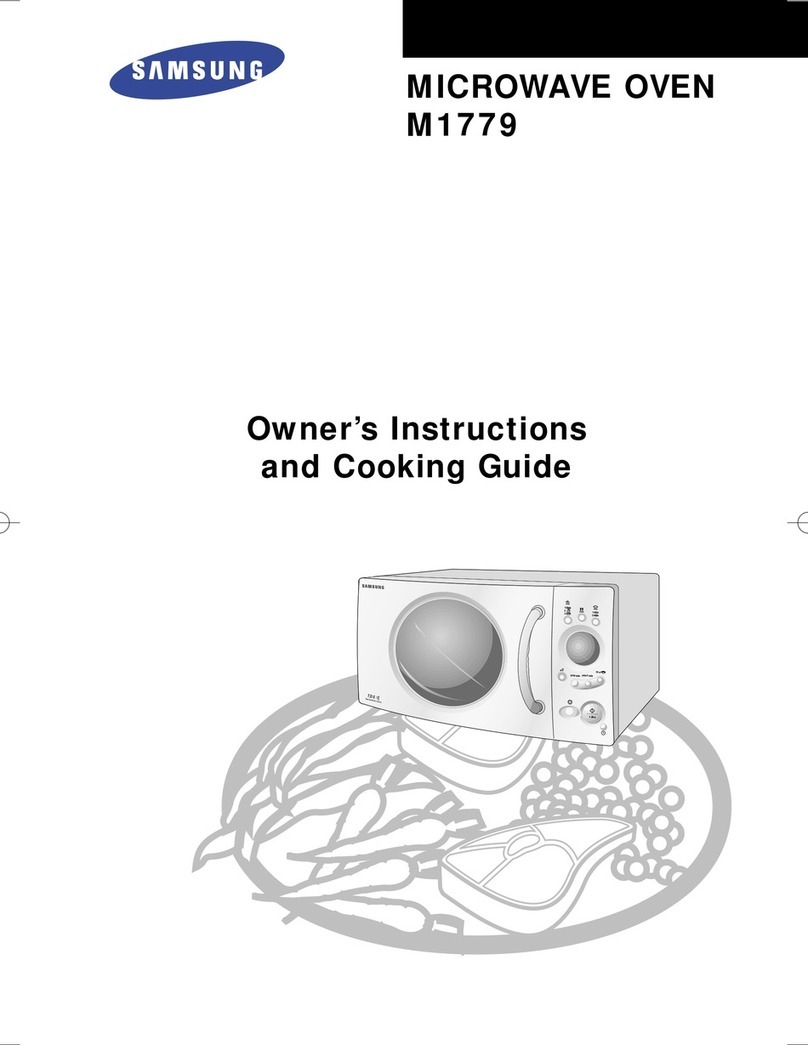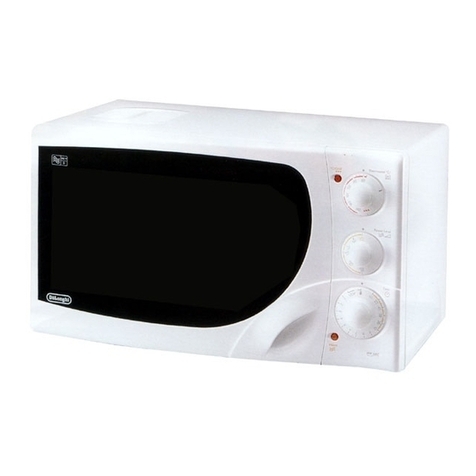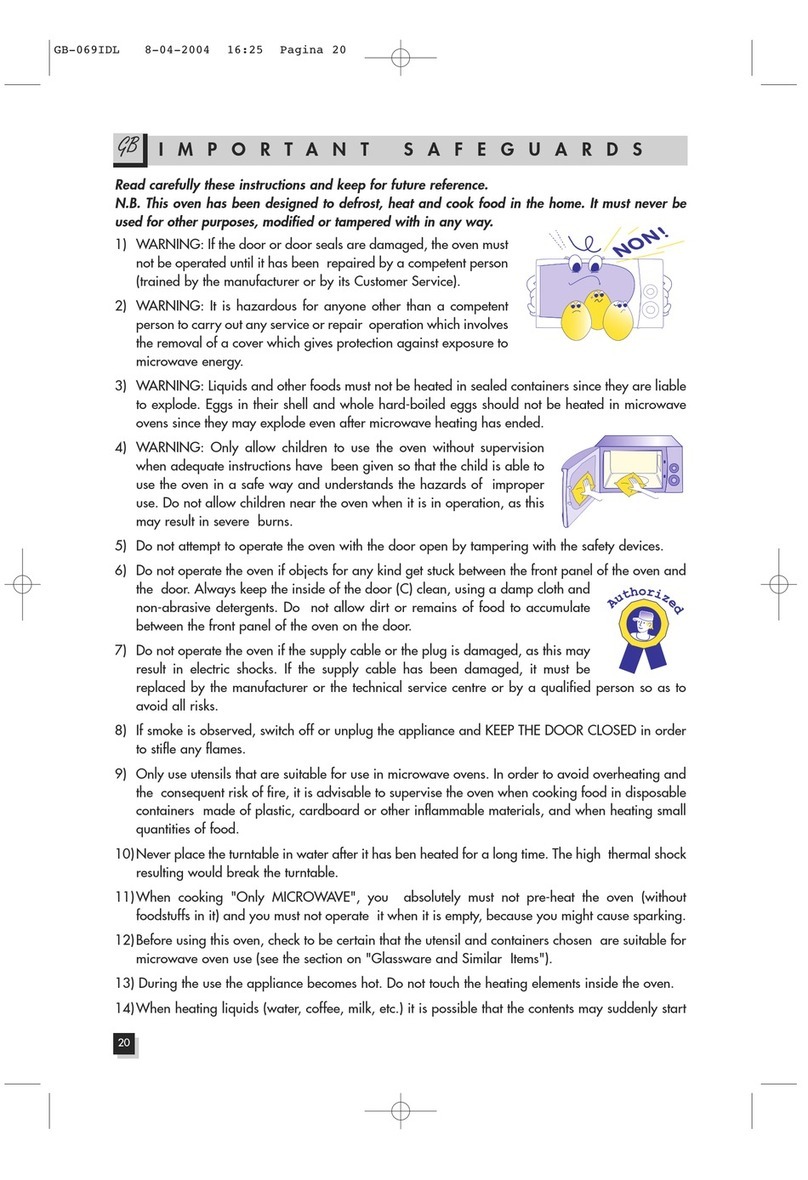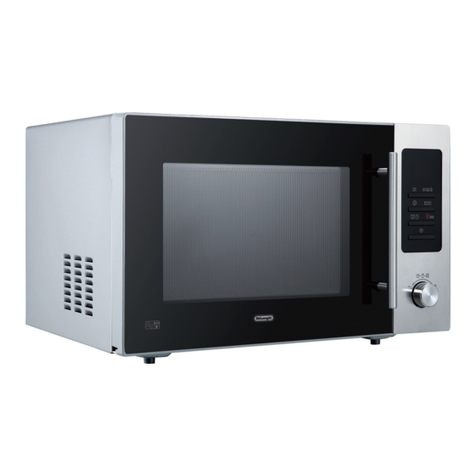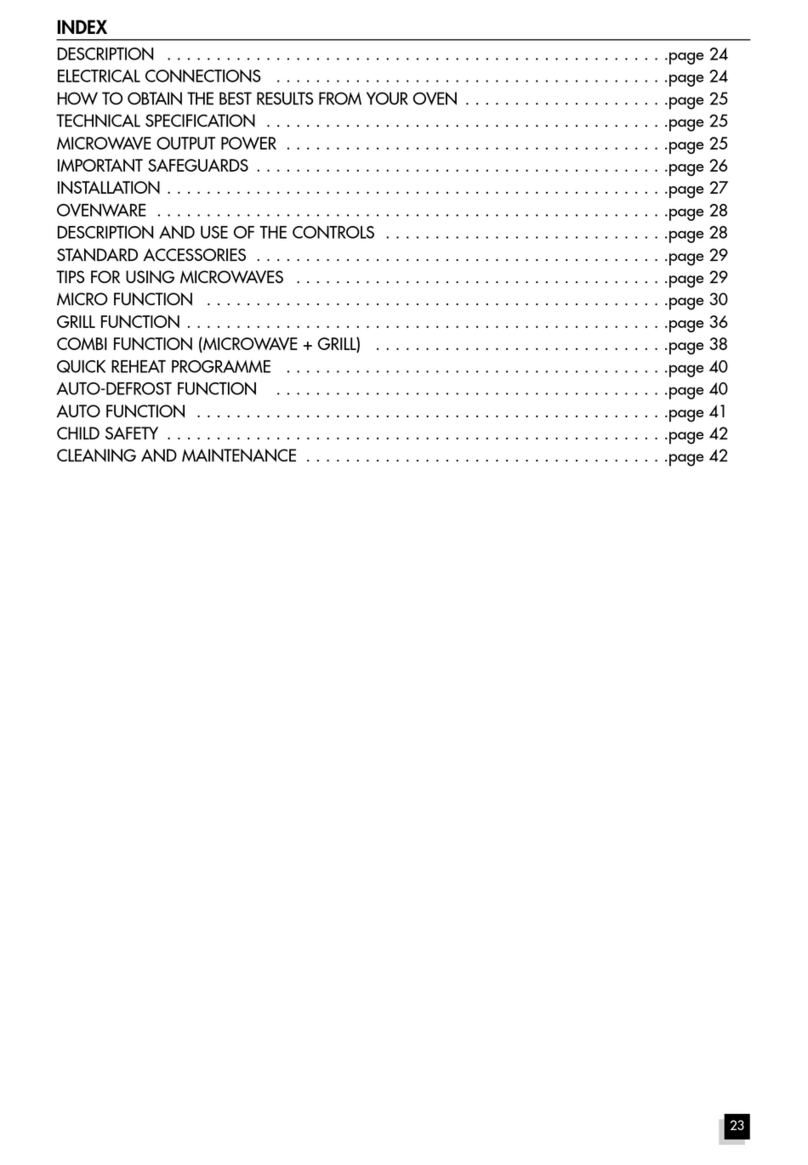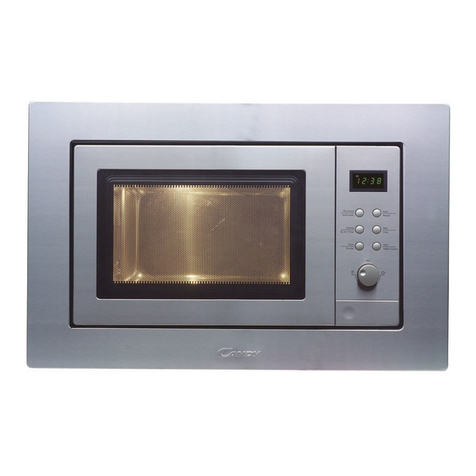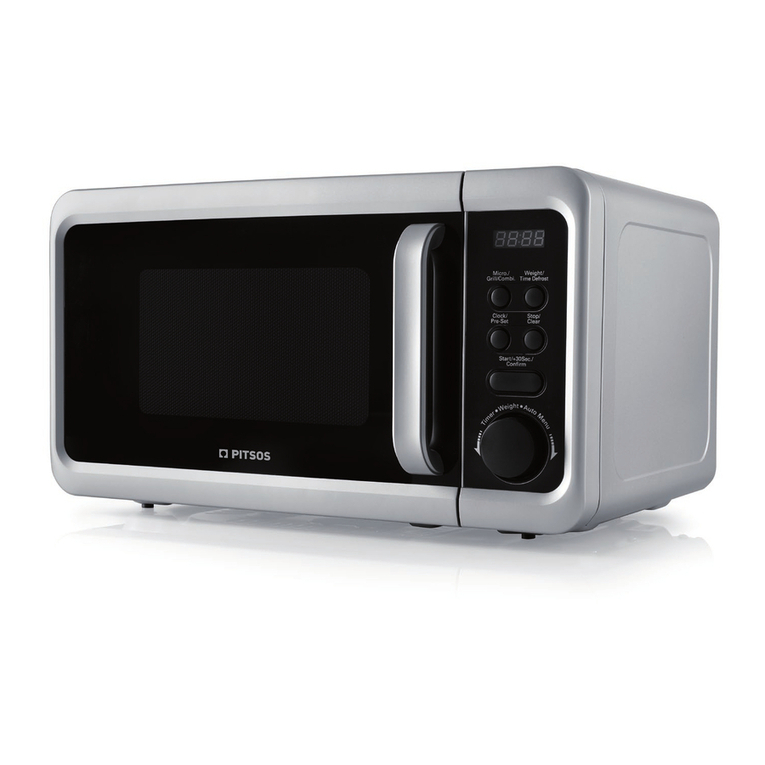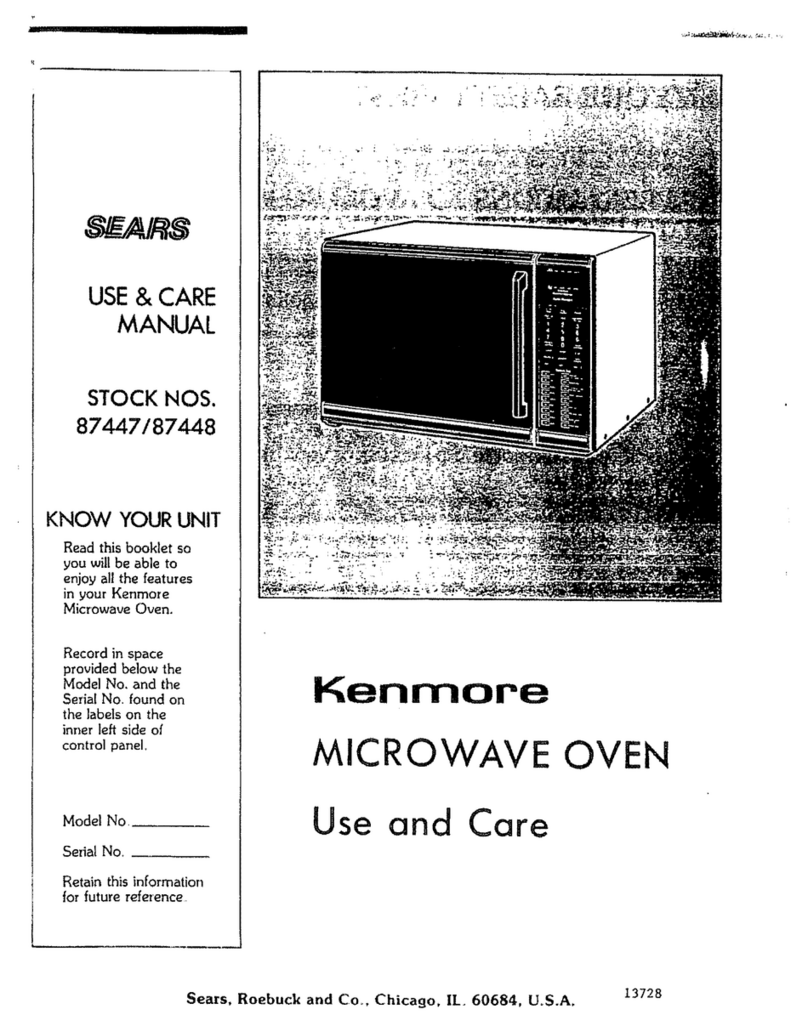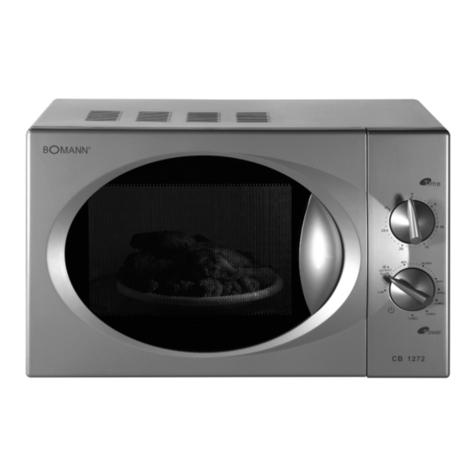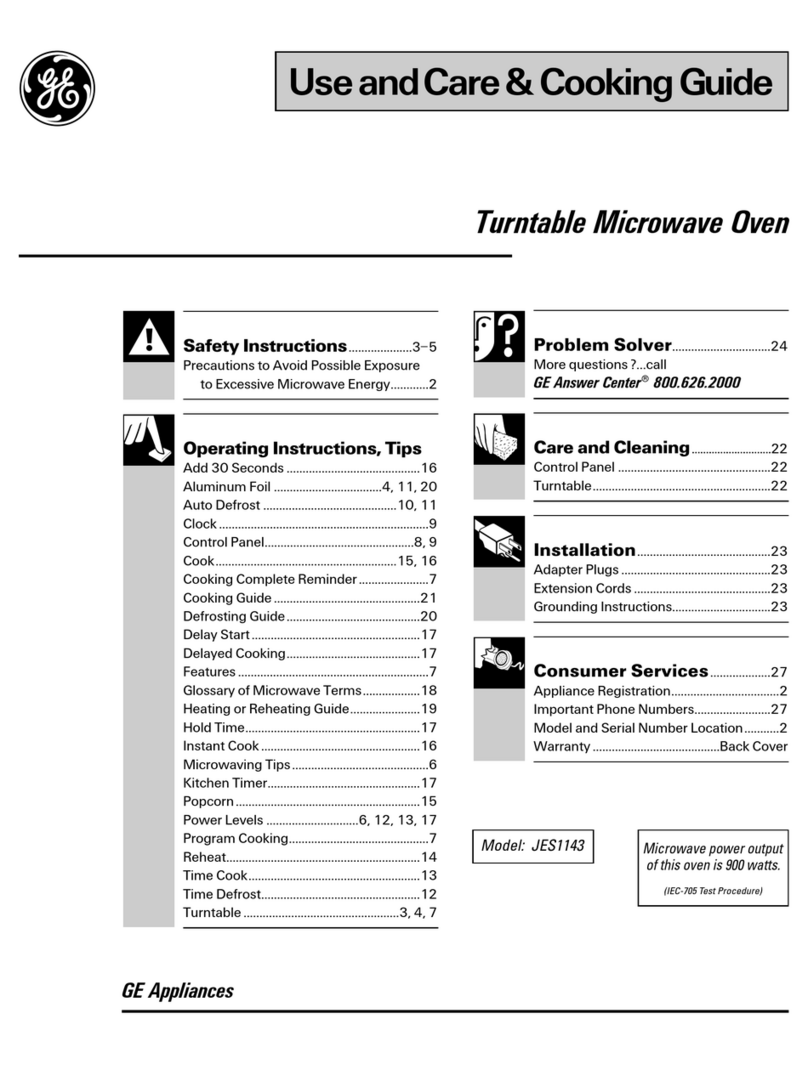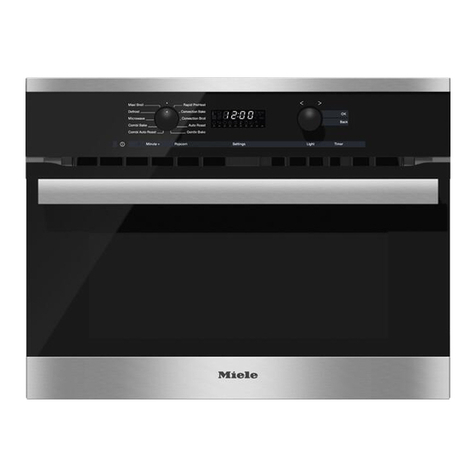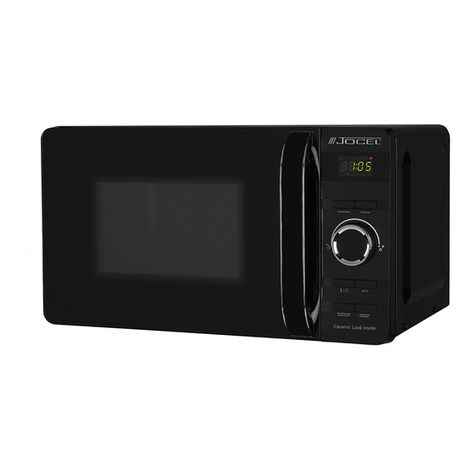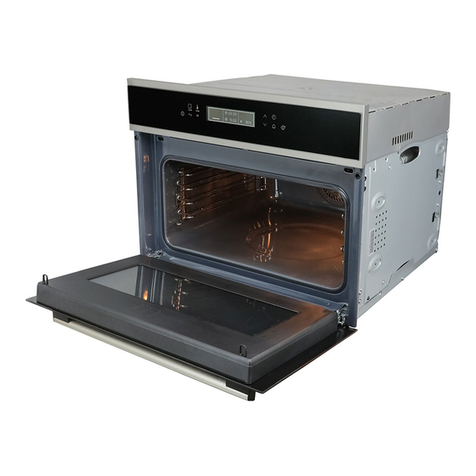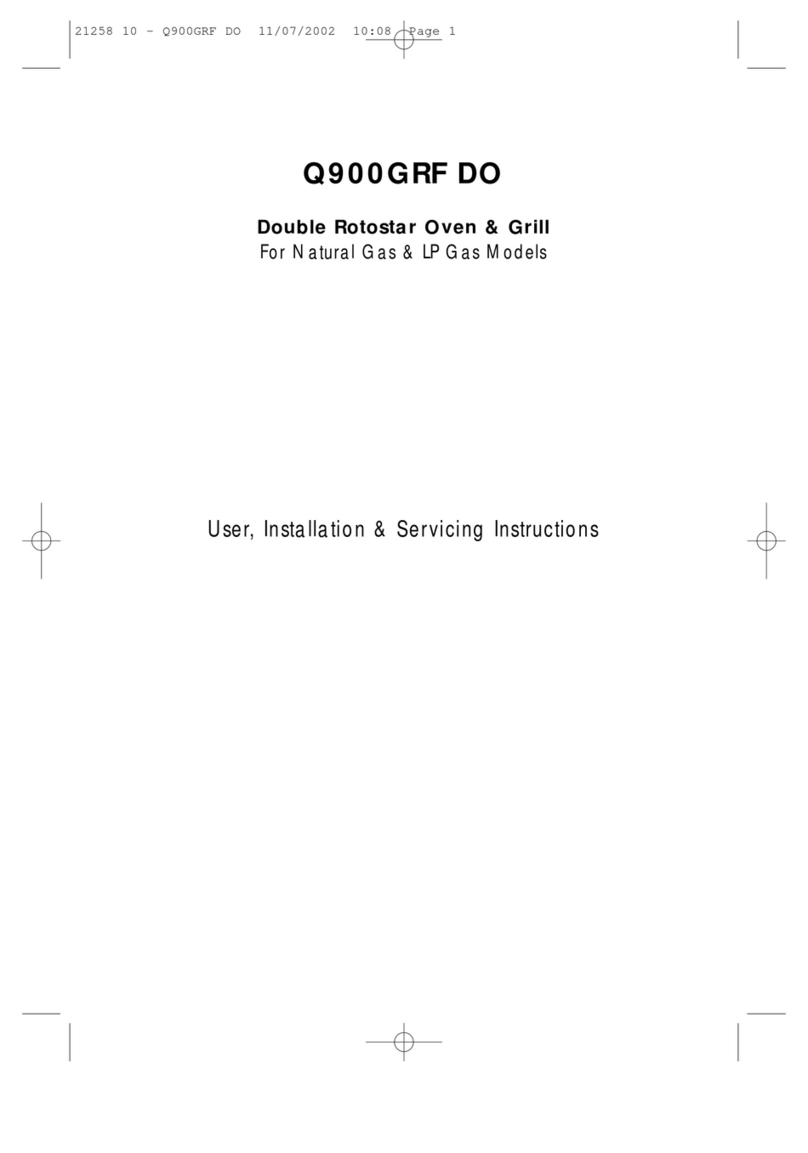ENGLISH
1.6 RULES AND GENERAL SUGGESTIONS FOR USING THE OVEN
chapter 1 - general
Microwaves consist of electromagnetic radiation found in nature under the form of
light waves (e.g., sunlight). Inside the oven, these waves penetrate food from all
directions and heat up the water, fatty and sugar molecules.
Heat is produced very quickly only in the food itself, whereas the container being
used warms up indirectly by means of heat given off by the heated food. This
prevents food from sticking to its container, so you can use very little fatty sub-
stance or, in some cases, no fat at all during the cooking process.
Therefore cooking in a microwave oven is considered to be healthy and good
for one’s diet. And in contrast to traditional methods, cooking in a microwave
foodstuffs are less dehydrated, lose less of their nutritional value, and retain more
of their original flavour.
Basic rules for correct cooking with a microwave oven
1) In order to set cooking times correctly, remember (in referring to the charts
on the following pages) that when you increase the amount of foodstuffs the
cooking temperature must likewise be proportionately increased and vice-
versa. It is important to respect the “standing” times: standing time means
that period during which the food must be left to “rest” after being cooked so
as to allow an even greater spreading of the temperature within. The tem-
perature of meat, for example, will rise about 5°-8° C. (approx. 9°-15° F.)
during the standing time. Standing times may be observed either inside or
outside the oven.
2) One of the main things you must do is stir the food several times while it is
being cooked. This helps make the temperature distribution more uniform
and thus shortens the cooking time.
3) It is also advisable to turn the foodstuff over during its cooking process: this
applies especially for meat, whether it is in large pieces (roasts, whole chick-
ens, etc.) or small (chicken breasts, etc.).
4) Foods having a skin, shell or peel (e.g., apples, potatoes, tomatoes, frank-
furters, fish) must be pierced with a fork in several points so as to permit
steam to escape and to prevent those items from exploding (see Fig. 9).
5) If you are preparing a large number of portions of the same food item (e.g.,
boiled potatoes), place those portions in a Pyrex dish in order to have them
cook in a uniform manner (see Fig. 10).
6) The lower the temperature at which a foodstuff is placed in a microwave
oven, the longer the cooking time required. Food having a room temperature
will cook more quickly than food having a refrigerator temperature.
7) Always do your cooking by placing the food container in the centre of the
turntable.
8) It is perfectly normal for condensation to form inside the oven and near the
air outlet. To reduce such condensation, cover the foodstuffs with clear-
sheet, wax paper, a glass lid or simply an overturned plate. Then, too,
foods having a water content (e.g., greens and vegetables) cook better when
covered. The covering of food also helps keep the oven clean on the inside.
Use clear-sheet made expressly for microwave ovens.
9) Do not cook eggs in their shells (fig. 11): the pressure which builds up on
the inside would cause the egg to explode, even after cooking has finished.
Do not heat up eggs which have already been cooked, unless they are
scrambled.
10)Do not forget to open containers which are air-tight or sealed before heating
or cooking food in the oven. The pressure on the inside of the container
would rise, causing them to explode even after cooking has finished.
fig. 9
fig. 10
fig. 11
38
